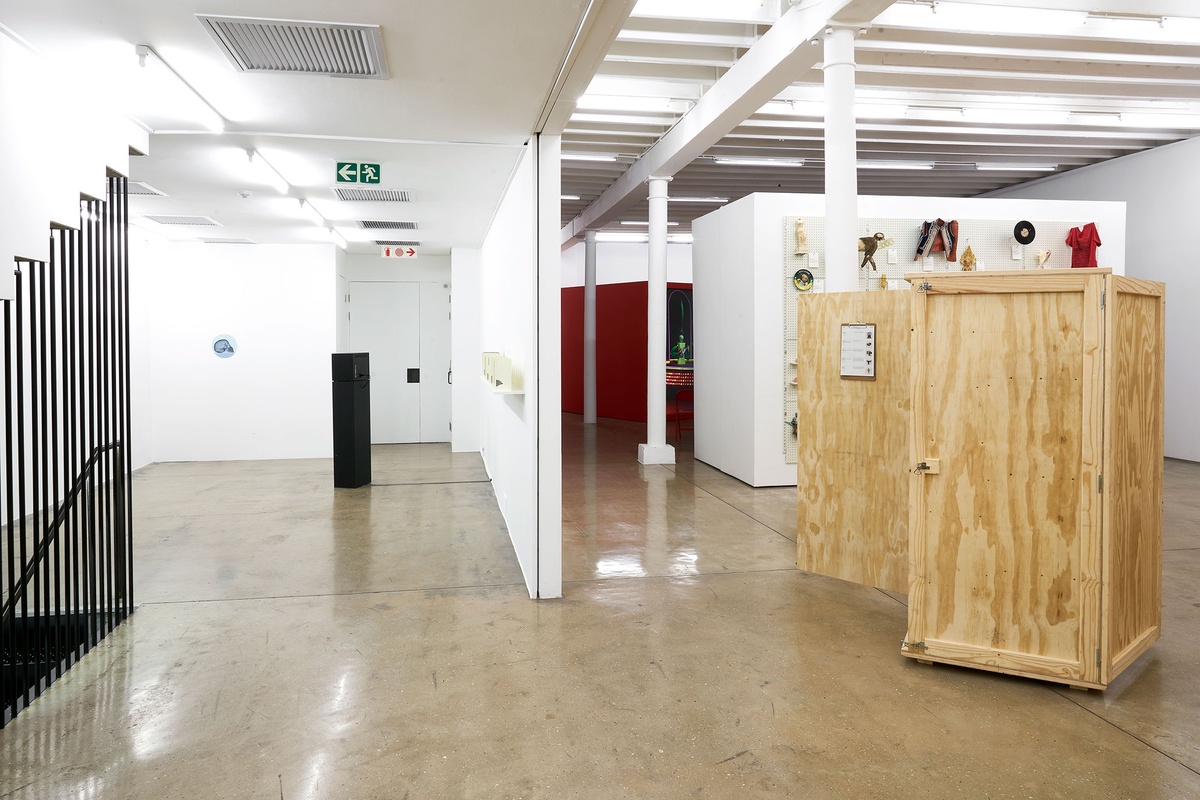Kathryn Smith

The late artist, curator and scholar Colin Richards (1954–2012) had for many years worked alongside two unidentified human skulls inherited through his position as medical illustrator at the University of the Witwatersrand. Troubled by the ethical lacuna they signalled in the history of medical collections in South Africa and their haunting familiarity in his workspace, they became recurring motifs in Richards’ drawings, paintings and prints. During the curatorial conversations to prepare the exhibition, Between Subject and Object: human remains at the intersection of art and science (2014, Michaelis Galleries, UCT), which Kathryn Smith co-curated with Richards’ former student Josephine Higgins and Penny Siopis – an exhibition which in many ways was designed to honour Richards’ interests and memory – Siopis invited Smith to produce a forensic facial reconstruction of one of the skulls.
Smith produced two facsimiles of the skull: one cast in plastic, which provided the architecture for The Studio Familiar: X0198/1669 (2014), a sculpture that saw the reconstructed bust mounted on a land surveyor’s tripod; and a micro-Computed Tomography scan in collaboration with analytical imaging technicians at Stellenbosch University, after which Siopis documented herself burying the remains in an undisclosed location in her film Lay Bare Beside (2015).
The Phantom Interlocutor (2023) is a digital stop-motion film made from the 2802 individual image slices produced by the micro-CT scanner. From a stack of apparently black and empty jpegs, Smith excavated the image of the skull from each slice through digital manipulation. Extending commonsense notions of personhood, the face is animated by filmic movement – an infinite rotation – rather than the presence of muscle, skin or sensory organs. As a visual mnemonic, it translates the history of the skull with reference to both the spectral and the haptic, like the incision along the top of the cranium as an artefact of autopsy, the etymology of which means ‘to see for oneself’.
b.1975, Durban
Advocating for vital pracademic exchange between operational, institutional and research environments, Kathryn Smith’s work mediates across the art studio, archive and the forensic laboratory. With a humanitarian and investigative bent, she occupies herself especially with lesser-known histories, instructive objects that otherwise elude or exceed utilitarian ends, and the unknown dead. Through various documentary and archival practices, Smith evidences a critical and poetic relationship with the forensic imaginary and related processes of truth-making, pursuing inter- and transdisciplinary collaboration as method and practice. Notable studio projects include Jack in Johannesburg (and elsewhere) (2003–2004); In Camera (2007; various iterations); and Incident Room (2012), which re-staged the troubling narratives of the unsolved murder of Jacoba ‘Bubbles’ Schroeder in Johannesburg in 1949. Her doctoral research project, Laws of the Face (2020), holds the folklore and science of the field of forensic art to account against the silent mass disaster of the unidentified dead in South African mortuaries and elsewhere, which was re-presented in part in the online artwork, www.speakinglikeness.online (2020). She understands the connection between her forensic and curatorial work as dual expressions of critical care for bodies, infrastructures, and non-human things, directed at mutual visibility and legibility.



